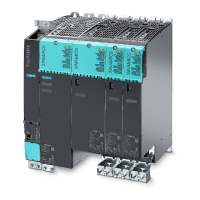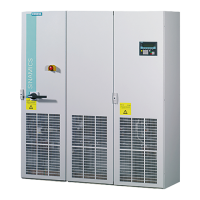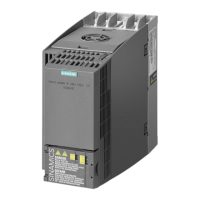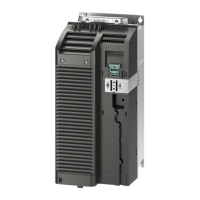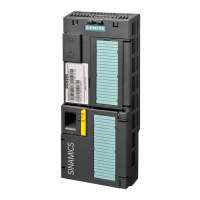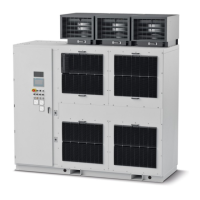Fundamental Principles and System Description
Engineering Information
SINAMICS Engineering Manual – November 2015
Ó Siemens AG
209/528
Anti-freeze Antifrogen N Antifrogen L Varidos FSK
Manufacturer Clariant Clariant Nalco
Chemical base Monoethylene glycol Propylene glycol Monoethylene glycol
Minimum concentration 20 % 25 % 25 %
Frost protection with
minimum concentration
- 10 °C - 10 °C - 10 °C
Maximum
concentration
45 % 48 % 45 %
Frost protection with
max. concentration
- 30 °C - 30 °C - 30 °C
Inhibitor content Contains nitrite-based
inhibitors
Contains inhibitors which are
amine-, borate- and
phosphate-free
Contains inhibitors which are
amine-, borate- and
phosphate-free
Has biocidal action with
concentration
> 20 % > 30 % > 30 %
o Biocides prevent corrosion caused by slime-producing, corrosive or iron-depositing bacteria. These can occur in
both closed cooling circuits with low water hardness and in open cooling circuits. Biocides are contained in the
specified anti-freezes as standard and are effective as of the concentrations stated in the table.
Protection against condensation
With liquid-cooled units, warm air can condense on the cold surfaces of heat sinks, pipes and hoses. This
condensation depends on the temperature difference between the ambient air and the coolant and the humidity of the
ambient air. The temperature at which water vapor contained in the air condenses into water is known as the dew
point. Condensation water can cause corrosion and electrical damage, for example, flashovers in the power unit and,
in the worst-case scenario, can result in irreparable equipment damage. For this reason, it is essential to prevent
condensation inside the units.
As the SINAMICS units are incapable of preventing condensation when certain climatic conditions are pesent, the
cooling circuit must be designed such as to reliably prevent condensation. In other words, measures must be taken to
ensure that the coolant temperature is always higher than the dew point of the ambient air.
This can be achieved either by a relatively high, fixed coolant temperature that is set according to the maximum
potential ambient temperature and air humidity, or by temperature control of the coolant as a function of the ambient
temperature and air humidity. An example of temperature control in a closed cooling circuit using a 3-step controller
and 3-way valve can be found on the following pages.
The table below specifies the Dew point as a function of ambient temperature T and relative air humidity Φ for an
atmospheric pressure of 100 kPa (1 bar) , corresponding to an installation altitude of 0 to approximately 500 m above
sea level. Since the dew point drops as the air pressure decreases, the dew point values at higher installation
altitudes are lower than the specified table values. It is therefore the safest approach to engineer the coolant
temperature according to the table values for an installation altitude of zero.
Ambient
temperature
T
Relative air humidity Φ
20 % 30 % 40 % 50 % 60 % 70% 80 % 85 % 90 % 95 % 100 %
10 °C < 0 °C < 0 °C < 0 °C 0.2 °C 2.7 °C 4.8 °C 6.7 °C 7.6 °C 8.4 °C 9.2 °C 10.0°C
20 °C < 0 °C 2.0 °C 6.0 °C 9.3 °C 12.0°C 14.3°C 16.4°C 17.4°C 18.3°C 19.1°C 20.0°C
25 °C 0.6 °C 6.3 °C 10.5°C 13.8°C 16.7°C 19.1°C 21.2°C 22.2°C 23.2°C 24.1°C 24.9°C
30 °C 4.7 °C 10.5°C 14.9°C 18.4°C 21.3°C 23.8°C 26.1°C 27.1°C 28.1°C 29.0°C 29.9°C
35 °C 8.7 °C 14.8°C 19.3°C 22.9°C 26.0°C 28.6°C 30.9°C 32.0°C 33.0°C 34.0°C 34.9°C
40 °C 12.8°C 19.1°C 23.7°C 27.5°C 30.6°C 33.4°C 35.8°C 36.9°C 37.9°C 38.9°C 39.9°C
45 °C 16.8°C 23.3°C 28.2°C 32.0°C 35.3°C 38.1°C 40.6°C 41.8°C 42.9°C 43.9°C 44.9°C
50 °C 20.8°C 27.5°C 32.6°C 36.6°C 40.0°C 42.9°C 45.5°C 46.6°C 47.8°C 48.9°C 49.9°C
Dew point as a function of ambient temperature T and relative air humidity Φ for installation altitude zero
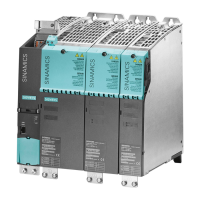
